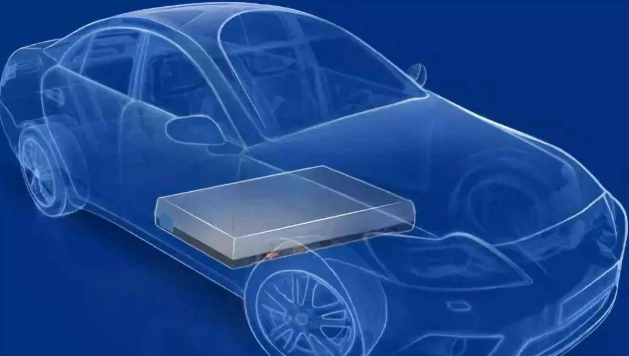How many years can lithium batteries usually be used? How long does it last?
Lithium batteries are a type of batteries that use non-aqueous electrolyte solutions from lithium metal or lithium alloy as negative electrode materials. In 1912, lithium metal batteries were first proposed and studied by Gilbert N. Lewis. In the 1970s, MS Whittingham proposed and started research Lithium-ion batteries. Because the chemical properties of lithium metal are very active, the processing, storage and use of lithium metal has very high environmental requirements. Therefore, lithium batteries have not been used for a long time. With the development of science and technology, lithium batteries have now become The mainstream. Shenzhen Jice Technology Co., Ltd. has collected relevant information below, hoping it will be helpful to you!
Lithium batteries can be roughly divided into two categories: lithium metal batteries and lithium-ion batteries. Lithium-ion batteries do not contain lithium in metallic state and are rechargeable. The fifth generation of rechargeable batteries, lithium metal batteries, was born in 1996. Its safety, specific capacity, self-discharge rate and performance-price ratio are all better than lithium-ion batteries. Due to its own high technical requirements, only a few companies in a few countries are now producing this lithium metal battery.
I believe most consumers have heard that the lifespan of lithium batteries is "500 times", 500 charges and discharges. If this number exceeds this number, the battery will "end of life". Many friends always stay in the battery life. Charging is done only when the battery is completely exhausted. Does this really extend the life of the battery? The answer is no. The lifespan of a lithium battery is "500 times", which does not mean the number of charges, but a charge and discharge cycle.

A charging cycle means that all the battery charges from full to empty, and then from empty to full, which is not equivalent to charging once. For example, a lithium battery uses only half of its power on the first day, and then it is fully charged. If this is the case the next day, you can charge half of it, and charge it twice in total, which can only be considered as one charging cycle, not two. Therefore, it may usually take several charges to complete a cycle. Every time a charging cycle is completed, the battery capacity will be reduced a little. However, this power reduction is very small. After charging a high-quality battery for many cycles, it will still retain 80% of its original capacity. Many lithium battery powered products will still be used as usual after two or three years. Of course, the lithium battery life still needs to be replaced after the end.
The so-called 500 times means that the manufacturer has achieved about 625 recharge times at a constant discharge depth (such as 80%), reaching 500 charging cycles.
(80%*625=500) (Ignore factors such as reducing lithium battery capacity)
Due to various influences of actual life, especially the discharge depth during charging, the "500 charging cycles" can only be used as a reference battery life.
The correct statement: The life of the lithium battery is related to the number of charging cycles, and has no direct relationship with the number of charging times.
To be simple, for example, a lithium battery uses only half of its power on the first day and then fully charges it. If this is the case the next day, you can charge half of it, and charge it twice in total, which can only be considered as one charging cycle, not two. Therefore, it may usually take several charges to complete a cycle. Every time a charging cycle is completed, the power will be reduced a little. However, the reduction is very small. After charging a high-quality battery for many cycles, it will still retain 80% of the original power. Many lithium battery powered products will still be used as usual after two or three years. This is why. Of course, the lithium battery life will eventually need to be replaced.
The lifespan of lithium batteries is generally 300 to 500 charging cycles. Assuming that the power provided by a full discharge is Q, if the reduction in power after each charging cycle is not taken into account, the lithium battery can provide or supplement it with a total of 300Q-500Q power over its lifespan. From this we know that if you charge 1/2 each time, you can charge 600-1000 times; if you charge 1/3 each time, you can charge 900-1500 times. And so on, if you charge randomly, the number of times is uncertain. In short, no matter how it is recharged, it is constant to replenish 300Q to 500Q of electricity. Therefore, we can also understand it in this way: the life of a lithium battery is related to the total charging capacity of the battery, and has nothing to do with the number of charging times. The impact of deep release and shallow release and shallow release and shallow charge on the life of lithium batteries is not much different.
In fact, shallow discharge and shallow charge are more beneficial for lithium batteries. Only when the product's power module is calibrated for lithium batteries can it be necessary to release and charge deeply. Therefore, products powered by lithium batteries do not have to be limited to the process. Everything is convenient first. It is charged at any time and does not have to worry about affecting life.
If lithium batteries are used in an environment above the specified operating temperature, i.e. above 35°C, the battery power will continue to decrease, that is, the battery power will not be as long as usual. If the device is charged at such a temperature, the damage to the battery will be even greater. Even storing batteries in hotter environments will inevitably cause corresponding damage to the quality of the battery. Therefore, trying to maintain the appropriate operating temperature is a good way to extend the life of lithium batteries.




 Add WeChat
Add WeChat

